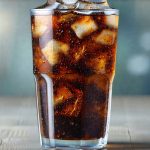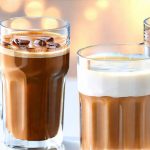The ubiquitous presence of sugary drinks in our modern diet has undeniably contributed to a range of health concerns, from increased risk of obesity and type 2 diabetes to dental problems and energy crashes. For many, the daily ritual of hydration has become synonymous with sweetened beverages – sodas, juices, flavored waters brimming with artificial sweeteners, even seemingly harmless sports drinks. This reliance on sugar-laden options isn’t necessarily a conscious choice; often it’s simply habit or a lack of appealing alternatives that feel equally satisfying and refreshing. But what if we could reclaim hydration as a source of nourishment rather than empty calories?
Fortunately, the answer lies in the rich world of teas. Teas offer a diverse palette of flavors, aromas, and potential health benefits without the need for added sugars. From the delicate floral notes of white tea to the robust earthiness of pu-erh, there’s a tea for every palate. Beyond their taste appeal, many teas are packed with antioxidants, vitamins, and minerals, making them a truly healthful alternative to sugary hydration. This isn’t about deprivation; it’s about intelligent substitution – replacing empty calories with beverages that actively contribute to well-being. It’s about finding joy in the simple act of hydrating while simultaneously supporting your health goals. If you are looking for ways to boost your fluid intake, consider exploring optimal hydration habits alongside tea consumption.
The Power of Herbal Teas
Herbal teas, often referred to as tisanes (though technically not “true” teas since they don’t come from the Camellia sinensis plant), are infusions made from a variety of dried flowers, fruits, herbs, and spices. This incredible diversity allows for a vast range of flavors and potential benefits. Unlike black or green tea, most herbal teas are naturally caffeine-free, making them an excellent choice for evening relaxation or individuals sensitive to stimulants. Mint teas, for example, can aid digestion and soothe stomach upset, while chamomile is renowned for its calming properties and ability to promote restful sleep. – Peppermint tea is a fantastic post-meal option – the menthol helps with bloating. – Rooibos (red bush) tea is naturally sweet and rich in antioxidants; it’s a great alternative if you crave something slightly sweeter without adding sugar. – Hibiscus tea offers a tart, cranberry-like flavor and has been linked to potential blood pressure benefits (though more research is needed).
The beauty of herbal teas lies in their versatility. You can easily customize them with fresh ingredients like lemon slices, ginger, or honey (used sparingly if you’re aiming for sugar reduction) to enhance both the flavor and nutritional profile. Furthermore, many herbs traditionally used in teas have long histories of use in traditional medicine systems – though it’s crucial to remember that these are not substitutes for medical treatment. The key is to explore different blends and find what resonates with your taste preferences and needs. Consider factors like desired effect (calming, energizing, digestive support) when choosing your herbal tea blend. For those seeking calming evening routines, exploring evening tea blends can be a beneficial step.
Herbal teas also offer a wonderful opportunity to experiment with home brewing. Growing your own herbs – even in small pots on a windowsill – allows you to enjoy the freshest possible ingredients. Drying your own herbs is a simple process that preserves their flavor and aroma. A basic rule of thumb for brewing herbal teas is to use approximately one teaspoon of dried herb per cup of hot water, steeping for 5-10 minutes depending on the desired strength. Remember, quality matters – sourcing organic herbs ensures you’re avoiding pesticides and other harmful chemicals.
Exploring Specific Herbal Tea Varieties
Choosing the right herbal tea can be overwhelming given the sheer number of options available. Let’s dive into a few popular choices: 1. Ginger Tea: Known for its warming properties, ginger tea is excellent for digestive issues, nausea, and boosting immunity. It contains gingerol, a bioactive compound with potent anti-inflammatory effects. Adding a slice of lemon enhances both the flavor and vitamin C content. 2. Chamomile Tea: A classic choice for relaxation, chamomile tea has been used for centuries to promote sleep, reduce anxiety, and ease digestive discomfort. Look for whole chamomile flowers rather than dust or fannings for optimal quality. 3. Hibiscus Tea: With its vibrant red color and tart flavor, hibiscus tea is rich in antioxidants and may help lower blood pressure (further research is ongoing). It’s a refreshing alternative to sugary fruit juices.
Beyond these well-known varieties, there are many other herbal teas worth exploring: – Lavender tea for relaxation and sleep – Rosehip tea for vitamin C and immune support – Lemon balm tea for stress relief and improved mood – Dandelion root tea for detoxification and digestive health. The best approach is to experiment with different blends until you discover your favorites. Don’t be afraid to combine herbs – creating your own custom teas can be a fun and rewarding experience. If you’re looking to enhance overall well-being, consider pairing herbal teas with foods that aid gentle urine processing.
Brewing the Perfect Cup: Tips & Tricks
The art of brewing herbal tea extends beyond simply adding hot water to dried herbs. Several factors influence the final flavor and potency of your brew. Firstly, water temperature is crucial. For delicate floral teas like chamomile or lavender, use slightly cooler water (around 175-185°F) to prevent bitterness. More robust herbal teas can handle boiling water. Secondly, steeping time significantly impacts the flavor and strength of your tea. Generally, longer steeping times result in stronger brews – but be mindful not to oversteep, as this can lead to a bitter taste.
Consider using filtered water for best results, as tap water may contain impurities that affect the flavor of your tea. Finally, don’t underestimate the power of proper storage. Store dried herbs in airtight containers away from light and moisture to preserve their freshness and potency. Experimenting with different brewing methods – such as using a French press or infuser basket – can also enhance your tea-drinking experience. Remember that patience is key – allowing the tea to steep properly allows its full flavor and benefits to unfold.
Sweetening Alternatives & Flavor Enhancers
While the goal is to replace sugary drinks, sometimes a touch of sweetness feels desirable. Fortunately, there are healthier alternatives to refined sugar. – Stevia: A natural sweetener derived from the stevia plant – use sparingly as it can have a distinct aftertaste. – Honey: A more natural option with antioxidants, but still contains sugars, so use in moderation. – Maple syrup: Another natural sweetener with a unique flavor profile, also best used sparingly. – Fruit slices: Adding fresh fruit like berries or citrus segments provides natural sweetness and vitamins.
Beyond sweeteners, consider using spices to enhance the flavor of your herbal teas. Cinnamon, nutmeg, cardamom, and cloves add warmth and complexity without adding sugar. Fresh herbs like mint or lemon balm can also elevate the taste profile. Don’t be afraid to get creative and experiment with different combinations – creating a truly personalized tea experience.
True Teas: Green, Black, White & Oolong
Beyond herbal infusions, “true” teas – those derived from the Camellia sinensis plant – offer a wealth of flavor profiles and health benefits. The level of oxidation during processing determines the type of tea: green tea is unoxidized, black tea is fully oxidized, oolong falls somewhere in between, and white tea is minimally processed. Green tea is renowned for its high concentration of catechins, powerful antioxidants linked to various health benefits. Black tea offers a more robust flavor and contains theaflavins and thearubigins, also potent antioxidants. White tea, being the least processed, retains much of its natural goodness and boasts a delicate, floral flavor. Oolong teas offer a wide spectrum of flavors depending on the level of oxidation – from light and floral to dark and roasted.
The caffeine content varies significantly between these true teas. Black tea generally contains the highest amount, followed by oolong, green tea, and white tea having the least. This makes it important to consider your sensitivity to caffeine when choosing a tea for different times of day. – Drinking black or oolong tea in the morning can provide an energy boost without the crash associated with sugary drinks. – Green or white tea mid-afternoon offers a gentler pick-me-up. – Herbal teas are ideal for evening relaxation. To further support your hydration strategy, explore optimal hydration cycles that won’t disrupt sleep.
True teas, like herbal teas, can be customized with additions like lemon slices, ginger, or mint to enhance their flavor and nutritional profile. They also offer opportunities for mindful consumption – savoring the aroma, appreciating the warmth, and taking a moment for self-care amidst a busy day. Embrace the ritual – it’s as much about the experience as it is about hydration.
Ultimately, replacing sugary drinks with nutritious teas is a simple yet powerful step towards a healthier lifestyle. It’s not about eliminating treats altogether; it’s about making conscious choices that prioritize well-being and long-term health. By exploring the diverse world of teas – both herbal and true – you can discover beverages that are both delicious and nourishing, transforming hydration from a source of empty calories into an act of self-care. For those focused on overall wellness, understanding common hydration mistakes can be invaluable.





















